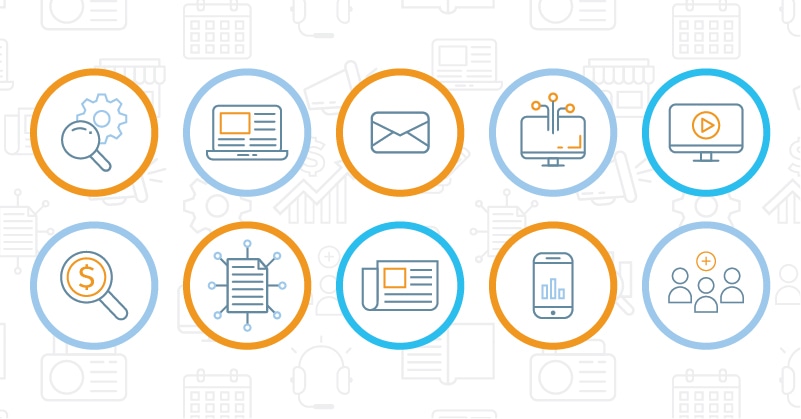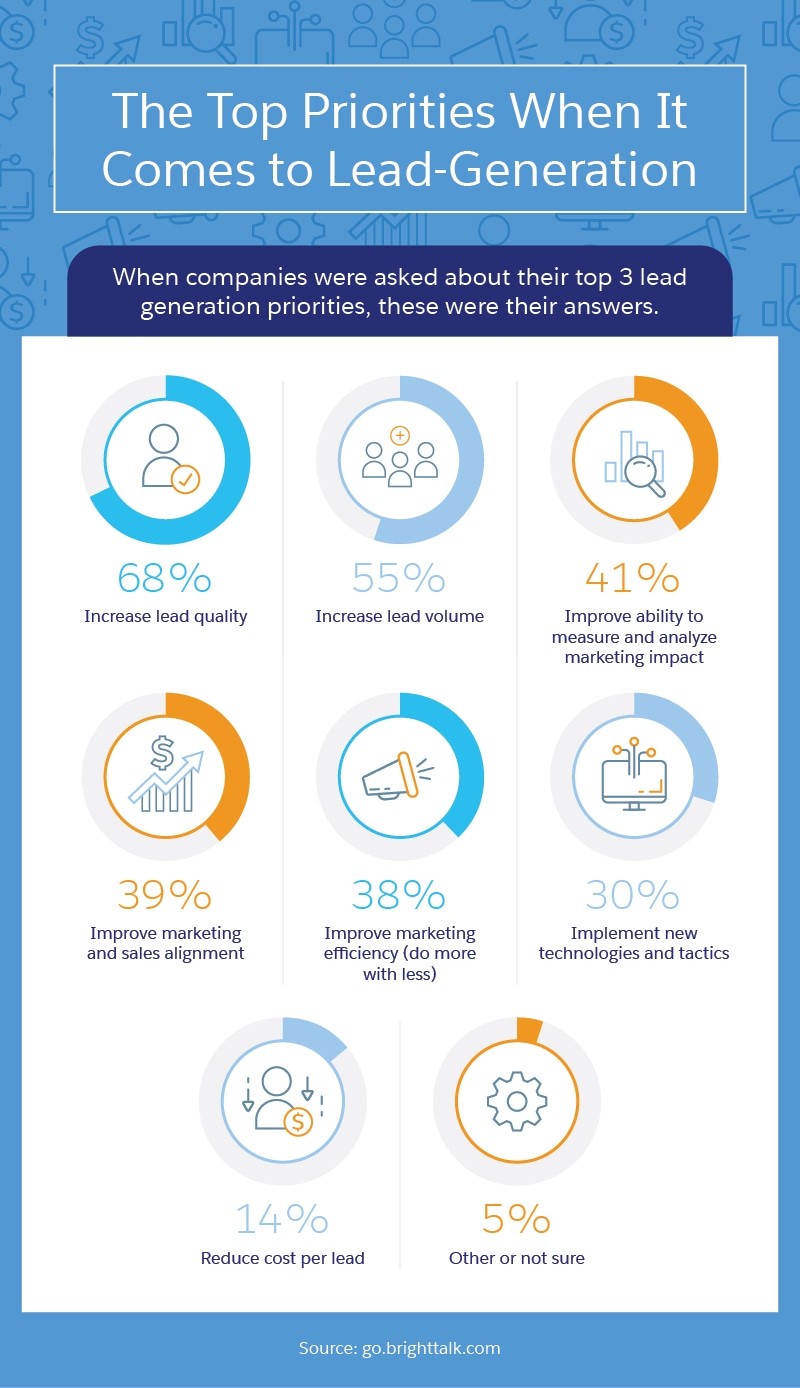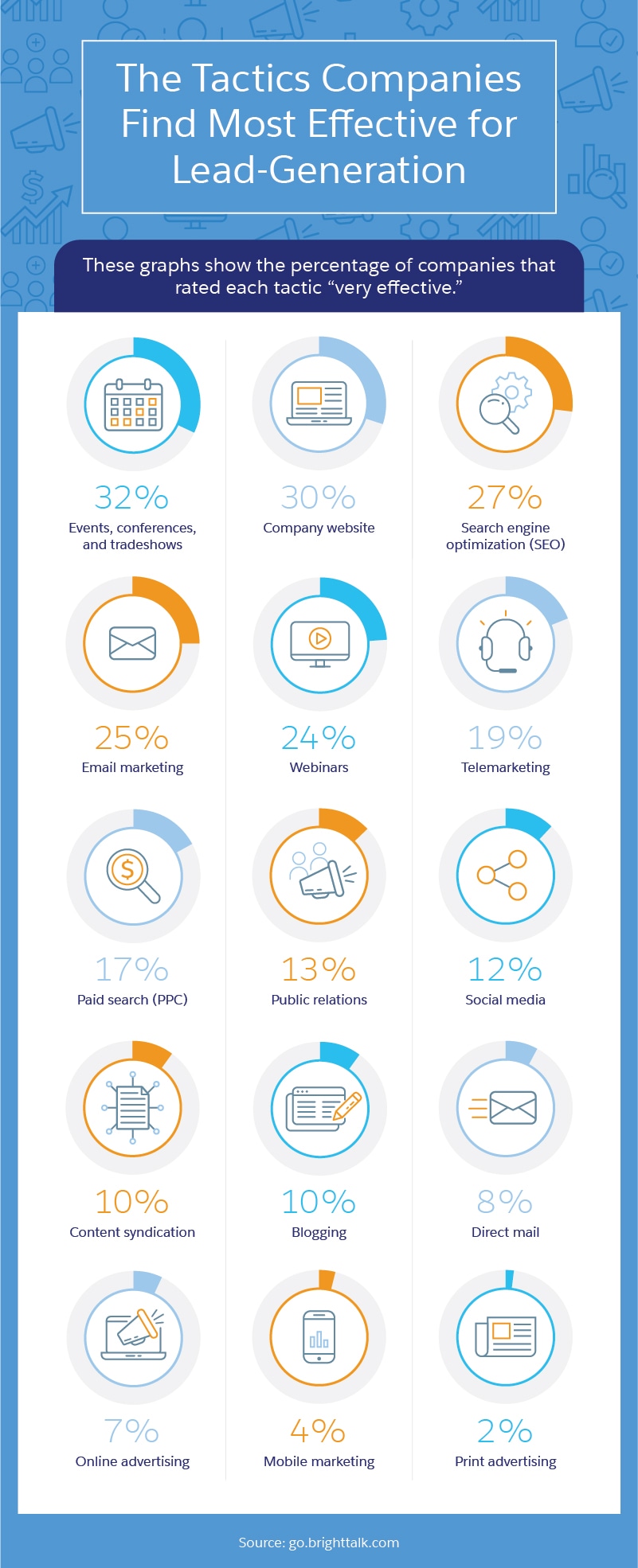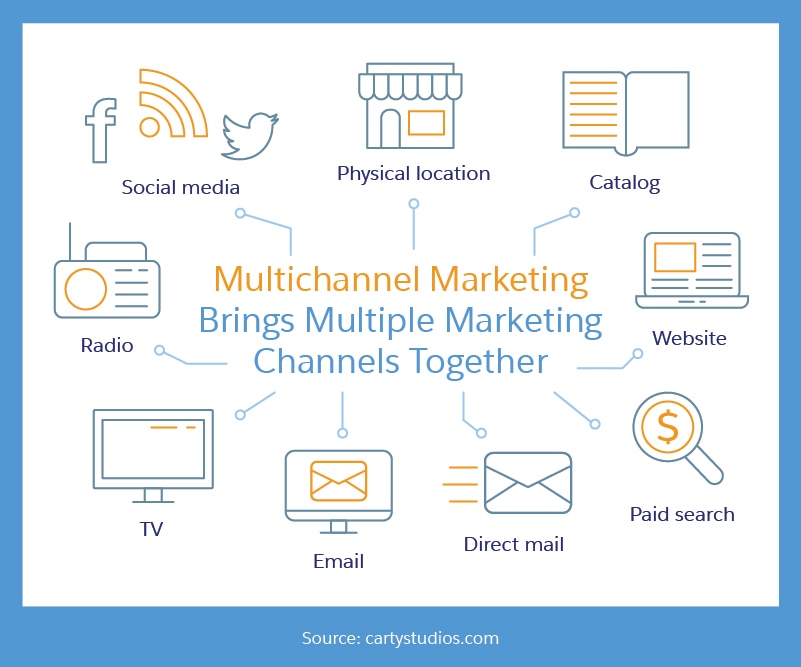6 Top B2B Lead-Generation Strategies

Lead generation is a persistent challenge even among high-growth B2B businesses. Salespeople who have direct, individual contact with buyers can communicate their company’s value proposition in a tailored way. However, marketers who are trying to generate leads don’t have the same intimacy and urgency on their side.
While there are numerous B2B lead-generation ideas you can use, there are several that should form the backbone of any successful program. The following lead-generation techniques are well-tested strategies that can be employed, whether you are building your program from scratch or refining your current lead-generation process.
Use your social channels judiciously.
How many times have you heard from people who have contradictory views on generating leads through social media? One “expert” claims, “Social channels are the only way to reach buyers in the 21st century,” while another laments, “Social media only gets you likes. There’s no real engagement there.”
As is often the case, the truth is rarely absolute.
Of course, social media channels can be useful for connecting with your prospects. Studies have shown that approximately 20% of business users have switched from email to social media as their primary form of communication. There are plenty of ways for you to waste time and resources chasing leads in channels that are ill-suited for your company. Brands can miss out on valuable sales opportunities when they choose not to employ social selling. That said, it’s important to remember that social media is not necessarily a magical cure for what ails your lead-generation efforts.

Aim for consistency and quality with your content marketing.
Proper execution of content marketing is proven to improve lead generation among organizations of all types and sizes. Of course, you need to be strategic and calculated about what you publish and how you promote it to reach the right audience.
You have to approach your content strategy from the perspective of the customer, if you want to be consistently successful. What are typical B2B buyers looking for when they consume your content, especially content on your website? Their time is limited, and if they take the time to read something, they expect to receive value from it.
Whether it’s answers to specific questions about products or the company, insights into the industry, or market news and regulatory developments, every piece of content that is part of your lead-capturing strategy must be tied to some specific and intentional value for the reader. When you publish reliable, high-quality information, you’ll attract leads that are ready to form a relationship with your organization.
Expand your thought leadership capacity through events.
If you succeed at providing consistent value through content marketing, you may be able to leverage this success into a position of thought leadership in a particular industry or sector. This opens up even more possibilities for B2B lead generation, as potential customers will be directed to your insights from sources where previously they would have been unlikely to connect with you.
Thought leadership doesn’t have to be limited to your company blog or a popular industry publication. In-person education, such as seminars and short courses, can also expose your brand to a new audience. These events will help further establish your commitment to supporting your business’ partners from the beginning of the relationship.
You can also integrate webinar content to make the experience convenient and accessible for potential leads. Make sure you capture as much information as possible from your attendees so you can follow up appropriately and engage in lead nurturing.

Mix high-level, quantitative data with observations from your sales team.
Large swaths of quantitative data can yield important insights for your lead-generation process, but this must be paired with a commitment to data integrity. According to BrightTALK, 42% of marketers indicated that problems with data quality were a primary barrier to lead generation. By analyzing various lead behaviors over long periods of time, you can glean crucial details about the buyer’s overall journey.
Quantitative data analytics can show you how your leads interact with your website at specific points in their journey, what drives them to a particular piece of content, or how they react to certain elements of your brand. Data analytics are also crucial for creating an intuitive lead scoring system that can help you identify higher quality contacts. Companies with lead scoring processes experience a 77% increase in lead-generation ROI compared to those who lag behind in this area. However, less than half of all companies currently have a lead scoring system in place.
While quantitative data sets can be powerful lead-generation techniques, that doesn’t mean there isn’t a place for qualitative analysis. Your salespeople spend every day communicating with your leads and carefully tracking their progress through the sales funnel. Use their insights in conjunction with your data gathering operation to maintain an ever-evolving picture of your lead behavioral profile.
Use A/B testing for unambiguous results.
When it comes to lead generation through your website, time is of the essence. Every potential lead that isn’t correctly funneled through the process could be a lost conversion that may have blossomed into a long-term partnership. When you need to be able to quickly identify ways to improve, there’s no better way to do that than with A/B testing.
A/B testing is uniquely suited to improve lead generation on your website. Its iterative nature allows you to implement changes and track their effects in detail. Almost your entire website experience can be subjected to A/B testing, including calls to action, pricing information, layout and design choices, and so on. Basically, if you have a choice as to how it appears on your website, you can A/B test the various options.
Perhaps the greatest benefit of A/B testing is that the results are unambiguous. Changes can be implemented immediately, without the need for strategic planning sessions and projections. When you suspect something isn’t working as well as it should be, run a test with a different option. You’ll find out if your suspicions were correct, and you can implement a better solution immediately.
Create an engaging and intuitive experience that is optimized across platforms.

Your lead may start researching solutions for their pain point on a mobile phone during a morning commute, pick up the search from a desktop once they get in the office, and continue the journey on a tablet later in the day. They may think of a crucial question they want to ask while browsing on a mobile device, or want access to specific video content they found. When any part of the digital experience is lacking across the platforms your audience uses to interact with your brand, it could derail the buyer’s journey.
A big part of B2B marketing is making sure the discovery process is as seamless as possible. Lead generation is typically accomplished before the buyer has any strong feelings about your brand, so even the smallest inconvenience can have a significant impact. This means the experience should be standardized no matter what kind of device they are using. For example, live chat should always be accessible on important landing pages, and content should be adaptive so it automatically formats for the reader depending upon the device.
When the digital experience is always intuitive, it takes the guesswork out of predicting how your leads will interact with the website. Contemporary B2B buyers expect answers and information at a moment’s notice, and marketers must focus on crafting an experience that fulfills this expectation. With an educational, data-driven lead-generation strategy that relies on a seamless customer experience, your organization will quickly reach quality leads and guide them through the sales funnel.
About the Author:
Share "6 Top B2B Lead-Generation Strategies" on your site:

Questions? We’ll put you on the right path.
Ask about Salesforce products, pricing, implementation, or anything else — our highly trained reps are standing by, ready to help.

